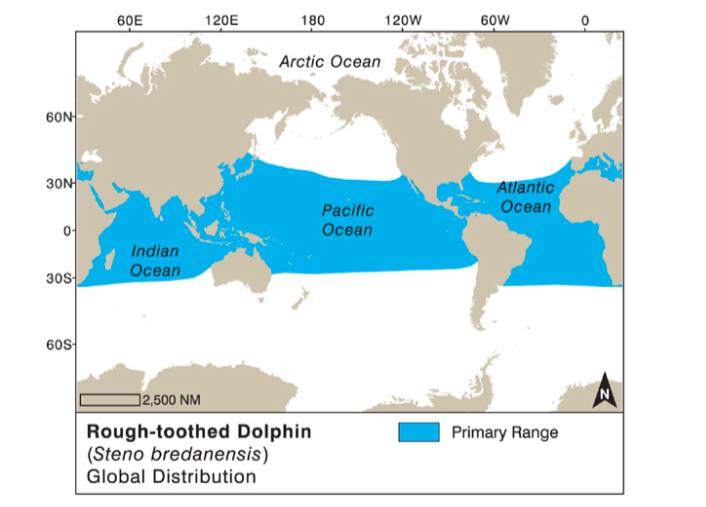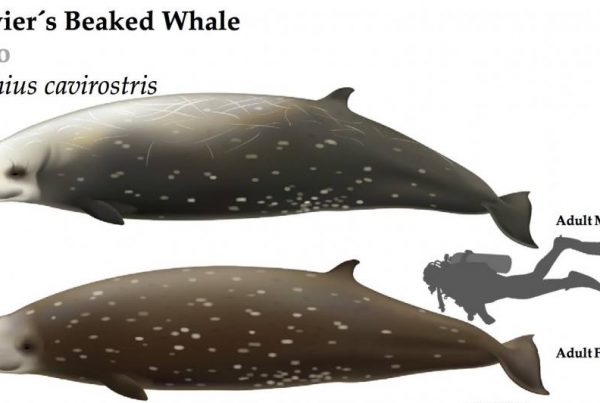
The Rough-toothed Dolphin, Steno bredanensis, are so named due to the vertical ridges on their teeth that give a rough appearance. They occur rarely in the Azores and have been observed during August in a small group up to 60 animals.

CHARACTERISTICS
- Latin name : Steno bredanensis
- Suborder : Odotonceti
- Family: Delphinidae
- Length : up to 2.8 meters
- Weight : up to 160 kg
- Dive time : up to 15 minutes
- Dive depth: up to 300 meters
- IUCN Status: Least concern

Worldwide distribution of Rough-toothed Dolphin (Steno bredanensis). Encyclopedia of Marine Mammals IIIrd Ed. Bernd Würsig, I. G. M. Thewissen & KIT M. Kovacs
DESCRIPTION
Color: Grey base color with paler grey flanks and a pinkish underside.
Head: Conical head shape with a long beak and a melon.
Fins: Triangular dorsal fin in the center of the back.
Teeth: 19-26 pairs of teeth on the upper jaw and 19-28 pairs of teeth on the lower jaw.

LIFE HISTORY
DIET
The Rough toothed Dolphin feed on fish and cephalopods. They feed in large groups which can reach up to hundreds of dolphins. When hunting, they submerge for up to 15 minutes to reach the benthic preys or to chase fish schools.
REPRODUCTION
Sexual maturity is reached at the age of 9-10 years (female) and 5-10 years old (male).The gestation lasts about 10-11 months. At birth, calves measure around 1.3 meter in length.

A calf in between two adults Rough-toothed Dolphins (Steno bredanensis).
SOCIAL BEHAVIOR
The Rough toothed Dolphin are frequently in groups of 10-20 individuals, but can reach up to 100 animals. Relatively inactive compared to other dolphins, they travel at around 3-6 km/h but can swim faster, up tp 24 km/h. Rough toothed Dolphins are skimming when they breath, they do not put the head and chin above the surface. On many Rough toothed Dolphins, their skin leave proofs of attacks by Cookie-cutter Shark (Isistius brasiliensis).
VOCAL BEHAVIOR
Short communication with patterns of 0.5 seconds, simple stepped whistles and echolocation clicks given in short burst. You can listen Rough-toothed Dolphins vocalizing in this recording collected by Discovery the sound in the sea.









